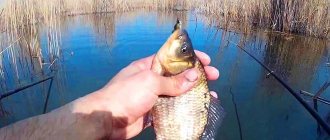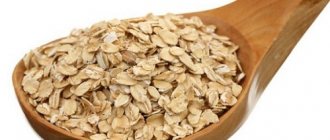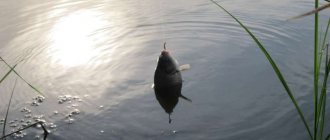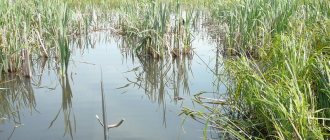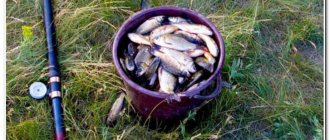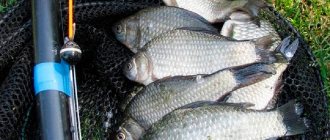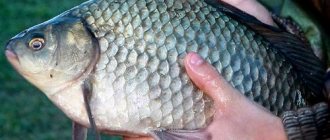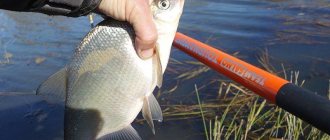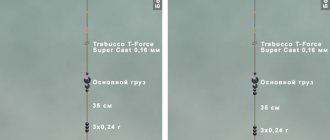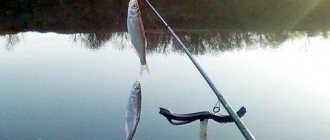In this article you will learn about the features of catching roach in the spring with a float. When does it start to catch and where, how to properly organize fishing gear for fishing with a float rod for maximum effective fishing.
The roach, also called the roach in some regions of Russia, begins to peck on reservoirs quite early - in early May, when birch leaves begin to bloom. Next we will go through the key aspects that need to be worked out to catch roach.
Choosing a rod for float fishing
- Flying tackle is a rod with a fishing line attached to its end. Casting distance: 1.5 rod lengths.
- Bolognese tackle - Tackle that allows you to make longer casts. Basically the same fly rod, only with a reel and guides. A spinning reel can also be used as a reel.
- The plug rod has a large length (from 8 meters) and is a long hollow structure with many elbows and rings. Fishing takes place at a long distance from the shore, due to the length of the rod. The plug can be held in your hands or placed on a special stand.
- A match fishing rod is a kind of spinning rod for long casts, equipped with an inertia-free reel and equipment with a sliding float.
Fish Tench
Catching tench in the spring with a float rod is one of the most successful, since at this time the tench wakes up from hibernation and begins to prepare for spawning. This fishing video is dedicated to this period of the year.
Simultaneously with the warming of the water and the normalization of the oxygen regime, the first bites of this freshwater beauty begin at the very shore during quiet hours. In spring, the tench stays near the reeds, where it eats the waking larvae of aquatic insects. Therefore, there is no point in looking for it at a depth where the water warms up later. The best bait during this period, as always, for catching this fish in the spring is an earthworm and maggot.
It is also necessary to lure tench with high-protein food. Chopped worms, mussel meat, scalded maggots, casters (maggot pupae) are suitable for these purposes.
A float rod is, perhaps, the best tackle for tench throughout the season, as it allows you to achieve maximum sensitivity to the bites of this careful and accurate fish. Fishing for tench in early spring is no exception.
In England, tench fishing is of particular importance. This kingfish is one of the most coveted trophies of British anglers. In this video, experienced angler Kevin Green shares his secrets in catching tench in the spring with a fishing rod. Kevin uses a fly rod to silently deliver bait and bait to the fishing spot near reeds, cattails and reeds, but I prefer fishing with a fly rod because it seems more accessible and familiar to me from childhood. For those who are also closer in spirit to fly fishing, I recommend visiting the section with a training video on catching tench with a float rod .
When can you start catching tench in the spring?
This is that moment in early spring, when the ice on lakes and ponds has already melted, and water lilies and egg capsules have not yet begun to rise to the surface. If along the banks of a reservoir in which tench is reliably or supposedly found, fresh greenery of coastal plants is already beginning to emerge, and buds are swelling on the trees, then you can count on a bite from a handsome red-eyed fish with a high probability. In mid-latitudes you need to focus on the second half of April or early May. In the southern regions, for obvious reasons, active tench fishing is possible as early as March.
Unlike hot summer days, in spring tench bite mainly during daylight hours, when the sun's rays begin to actively warm the water of rivers, lakes and ponds after the winter cold.
I hope you liked this video tutorial about spring tench from our British brother-fisherman. I also recommend that you familiarize yourself with other videos on the fish tench video .
And for dessert, Normund Grabovskis will tell and show us how in the spring they catch tench in a lake in the Baltics.
Proper float loading
Loading the float is an important part of preparing float gear for fishing, especially for roach.
It is important that the float has sufficient weight and is almost completely submerged under water, with the exception of the tip, which is usually painted in a bright color, visible to the eye from afar.
If the float is underloaded, then you simply will not see a bite, because it is simply difficult for the fish to make any changes to the position of the float, which floats confidently in the water, and does not stand, ready to dive at any touch of the fish.
Below is a drawing showing the correct degree of float loading. The body is under water, the tip is above the surface.
Search for roach in spring
All known predators hunt for roaches. She has to pay a lot of attention to camouflage, otherwise she can easily become prey for pike or pike perch. For roach, this is a matter of life and death, so it tries to stay only in proven places, and when hunger drives it in search of food, it does so with extreme caution. The best assistant in her difficult existence is vegetation. Water thickets are at the same time a dining room, a home, and a reliable shelter from predatory fish. And since in early spring the awakened plants are just beginning to grow and cannot provide the roach with proper protection, it has no choice but to hide among the flooded snags and islands of dry reeds from last year. It is in such places that you need to catch it.
It is worth mentioning that in areas with a light sandy bottom this fish stands out too much, so it always avoids them, choosing a darker background.
Roach baits
The sorozhka, like other cyprinids, will not refuse a worm (dung or rain or earthworm), but due to its size of body and mouth, it is often caught using maggots .
Try to match the size of the fish's mouth with the size of the hook bait. This is a very important aspect in fishing.
For roach, hooks of size 18 to 10 according to the international system are usually used. Usually in large letters on packages.
Catching roach on a feeder in May
By mid-to-late May it becomes warm enough to start fishing for roach on the feeder. The main components of the gear are:
- a 3.5 meter rod with 140 grams of dough;
- fishing line with a diameter of 0.14 mm;
- hooks No. 14.
- closed and semi-closed feeders;
After the feeder is equipped, it is worth taking care of the bait. In the spring, you can start using boilies containing chopped bloodworms mixed with breadcrumbs. It is important that the balls remain moist and do not fly apart when they hit the surface of the water.
During fishing, the main thing is that the float moves in the fishing zone. Only during fishing can you determine the area where there is a large concentration of fish.
Selection of feeder equipment
We already have an article on choosing feeder equipment depending on fishing conditions (on current, in still water) and the type of fish. The simplest equipment will be a paternoster, especially if you are fishing on a feeder for the first time.
It happens that a roach weighing half a kilo hatches, and to catch such a large specimen you will need bait of animal origin. To catch a large roach, the fishing line must be at least 0.14 mm. The best option would be to use a float rod.
More often, anglers use a drop-shaped float with a number 5 hook. And the rod is supplemented with rings to avoid sagging of the fishing line. Thus, the capture of a large specimen of spring roach is guaranteed.
In addition to the equipment listed in our articles, there is this option with two hooks that are attached to the main fishing line:
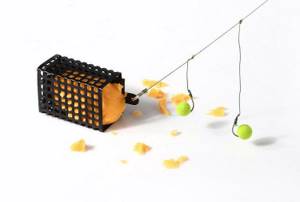
Fishing technique
Bait balls
Usually, roach fishing begins with bait. To do this, an hour or two before fishing, anglers go to the intended area of the reservoir, where they are going to feed the fish. It is worth noting that you should not overfeed the roach, otherwise it will quickly leave this place. The best option would be a couple of casts of bait balls the size of a small apple.
On the day when the fisherman came to his site, about half an hour later it is worth feeding the fish place again. It is important that the bait does not crumble and is not sticky. Then you need to start playing with the fish with a properly equipped fishing rod.
- To begin with, the tackle is lowered to the depth level where the roach is found, and without jerking it is raised 10 centimeters up. Then they are smoothly lowered to the same depth. These steps must be repeated at least 10 times.
- Alternating raising and lowering the bait to the bottom guarantees bites.
- By experimenting with the number of pauses and the amplitude of movement of the tackle, you can achieve positive results.
- When lowering the bait to the bottom of the reservoir, it is necessary to imitate the movement of the bloodworm, which smoothly descends. When creating such an imitation, the fish immediately rushes to attack the bait.
- To prevent the fish from falling off when playing, the hooks must be lightning fast.
Video on catching roach on a feeder in spring
Roach bait
If you are preparing homemade bait, then the ideal ingredients for the track will be:
- millet;
- semolina;
- barley grits;
- pea flour.
It is important that the bait for roaches is crumbly and dusty, forming a cloud of dust. This is very attractive to the track.
Even if you purchase branded bait, it is worth diluting it with clay so that the bait reaches the bottom, because roach is found at the bottom. You can and should add bait components to the bait that will be used as hook bait: maggot, worm, corn.
What do roaches bite on in spring?
At this time of year, it is important to choose the right bait and the catch will not take long. A maggot or a worm will work well. The main thing is that the bait moves. A moving bait will attract the attention of even lethargic fish.
It is necessary to change the bait every 5-10 minutes. If there is no bite on the maggot or worm separately, you should put both the worm and different maggots on the hook at the same time.
Read also: Catching roach with semolina
Roach is a schooling fish. Therefore, if there is no bite for 1-2 hours, do not despair. As soon as the school approaches, there will be no time to let go of the fishing rod.
Catching roach in early spring with a float rod should begin in places of warmer water or areas thereof. In order to find such a place, you can use a thermometer. You need to lower it to the bottom using a fishing rod. You can also observe where the ice melts earlier and notice warmer areas of the reservoir. And there in the spring they carry out feeding and fishing. Larger specimens are found in such areas. This is due to the fact that larger fish bask in the sun and go for complementary food much faster and more aggressively than their small relatives.
Read also: The influence of weather on fish biting
Tackle and fishing methods
In spring, the most popular fishing method is a float rod . And if in a stagnant body of water fishing is carried out practically in one place, then fishing in the current is carried out in a retrieve, forcing the fisherman to move frequently. Spring fishing can also be done with a light bottom fishing rod. Its equipment is elegant and sensitive.
The gear used for catching roach is a light rod 4-6 m long. If fishing is carried out close to the shore, the main line is tied to the tip of the rod. If you need to cast long distances, you will need a small spinning reel.
The thickness of the main line is 0.14-0.16 mm, and the diameter of the leader can vary between 0.1-0.12 mm.
The size of the hook is selected according to the size of the bait.
It is very important to accurately load the float so that the slightest touch of the fish is visible to the angler.
For feeder fishing, be sure to use non-stretch monofilament. Don't skimp on fishing line and increase the number of bites by 200%.
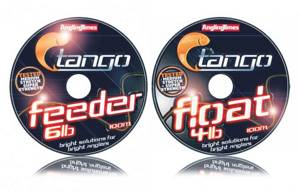
For bottom fishing, feeders and pickers are used. To catch roach in the spring on a feeder, it is enough to make not very far casts. Usually the roach comes quite close to the shore, so the feeder or sinker should be light. It is better to make a starting feed using a feeder, and then move on to fishing with a sinker.
- rod length 3.1-3.9 m with test 5-30 g;
- reel size 1500-2000;
- main line 0.2 mm;
- leash 0.5-0.8 m long and 0.14-0.16 mm thick.
The feeder can be attached to the main line using an anti-twist tube or a loop system.
For fishing on rivers, mesh metal feeders of triangular or rectangular shape are used. For fishing in standing water, feeders of any shape, made of any material, are suitable. Even homemade models made from plastic bottles are suitable for catching spring roach.
The tip of the rod should be soft and sensitive in order to transmit any touch of the fish to the bait.
Float fishing in spring: searching for fish and features of its behavior
As a rule, spring fishing with a float rod begins after the ice has melted and the water has cleared. The faster it warms up, the sooner the fish will begin to be active, so fishing begins earlier in small bodies of water. If the water is quite clean, then you can try your luck as soon as the reservoir is free of ice. But it’s worth considering that the early spring bite is unstable and changeable, like the weather itself: sometimes the sun is shining, sometimes it’s raining, the wind changes direction, the pressure changes, all this affects the fish’s bite. The problem doubles if you are fishing in a large, unfamiliar body of water, where there are no proven places where fish gather, and you have to constantly be tormented by doubts, either the fish are not biting, or they are not here and you need to continue searching for them. Unfortunately, float fishing in the spring in many places can be complicated by the presence of high water levels due to melting snow, ice, and subsequent heavy spring rains. Therefore, fishermen need to pay attention to areas where reservoirs have high and steep banks; here the water is unlikely to overflow the shore and flood the plain.
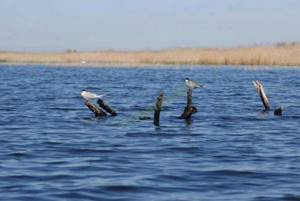
In early spring you should look for fish near snags
For such fishing, using a boat would be an excellent option, although it is worth finding out whether there is a ban on fishing with the use of swimming equipment in the area where you are fishing during this period. The reason for this ban is the spawning of fish; very often at this time it is even forbidden to fish in a wade, and it is only allowed to use one fishing rod with one hook. In such cases, we take waders or a suit for wading and walk through the puddles and shallows in search of a promising fishing spot. In early spring, it’s worth looking for sunny shallow water where fish can go out to warm up; you should especially count on a catch if you find a secluded bay, closed from the winds and full of flooded snags, logs, rubble and stones. During the period when the water is cloudy, it is worth looking for areas where a clear stream flows into a lake or river; aquatic inhabitants like to accumulate in such places.
Also promising places for fishing in the spring with a float rod are floodplain meadows (plain areas located near the river and flooded with water during high water), in this place the depth is shallow, the water warms up quickly, and the soil is rich in food, so you can find quite large fish here . With gradual warming and an increase in vegetation, the fish moves closer to the reeds and various grass and algae carpets; windows in aquatic vegetation with a depth of 0.5-1.5 m are especially catchy at this time. The shallow depth in these windows often allows you to see the fish that stand in them, and their presence can also be determined by the movement of the reed stems and splashes of water. Some fishermen choose 3-4 such windows, lure fish into them, and then fish, changing them every hour.
Spring is not summer, during this period the floater first needs to find fish, and only then keep it at the fishing point with the help of bait, but there is no need to rush here, you need to start feeding only if the bite disappears and feed only in small portions.

Promising fishing spots
Before you start feeding, it is necessary to take into account that the reason for the disappearance of the bite may be a cloud that covered the sun for a while, or a sharp change in the wind. It is worth remembering that when searching for fish, it is better to focus on a specific species.
In early spring, you should not rush to hook a fish when it bites; it takes more time for it to approach the bait and swallow it. In cold water, the fish are often less frisky and active, so it is easier to catch them. Also during this period, evening fishing may be more effective than morning fishing, since the water becomes warmer towards evening.
float fishing in spring for individual aquatic inhabitants
roach on a float immediately after the freeze-up, but its bite is still quite weak, as it gets warmer it improves, and before spawning the feeding begins. In early spring, when there is still little shelter in the reservoir, you should look for roach in shallow water near last year’s reeds, snags and flooded bushes. It avoids open areas with a light bottom, choosing dark places; at this time it can be found even at a depth of up to 0.5 m. With the onset of spring floods, the fish chooses deeper water areas, but their depth, as a rule, does not exceed 1.5- 2 m.
In the spring, float fishing for crucian carp begins when the water warms up to 6 degrees. At this time, it bites quite sluggishly; the best time for fishing is morning and evening, especially before sunset. The most effective bite occurs before spawning, when the crucian carp begins to eat. After the crucian carp comes out of the wintering pits, it rushes to shallow water, where the water has warmed up and there is food that has been preserved since the fall, so in early spring, areas of bays with a depth of up to 1 m, protected from the wind, will be an excellent place for catching crucian carp. In such places, first of all, you should look for it near flooded logs and snags. With gradual warming, the crucian carp moves to the reed thickets.
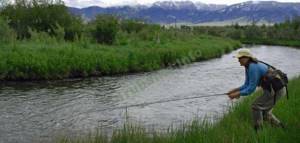
catch bream in the spring using a float rod immediately after the ice has melted, although it is better to wait a little until the water drops to normal levels. As the water clears, the bite intensifies; catching bream in the spring before spawning is especially successful. In the morning, in sunny weather, bream approaches the shore to a depth of 1.5-2 m, here the water warms up faster. During the day, bream can move quite far from the shore to the shallows near holes or river beds; here the depth, as a rule, does not exceed 2-5 m. In the evening, it again comes closer to the shore, to places with the greatest concentration of vegetation, in search of a good spawning ground.
Carp is a heat-loving fish, so in early spring it behaves sluggishly and bites weakly. You can start catching it in the south at the end of March, in northern latitudes at the beginning of May. At rates and ponds where there is no current, due to the slower oxygen saturation of these reservoirs, carp begin to bite 3-4 weeks later than, for example, in the bays of rivers and lakes. Fishing in the spring with a float rod will be successful at a depth of about 2 m, where the warm spring rays reach the bottom; on rivers, carp looks for quiet creeks and bays, where the current is weak and the water has time to warm up; in early spring, you should not look for carp in the shade of trees. Then, the higher the water temperature in the reservoir rises, the deeper the carp goes. In warm spring, it is worth looking for carp in pits around which the bottom is covered with shells and there is a large number of young shoots of algae
